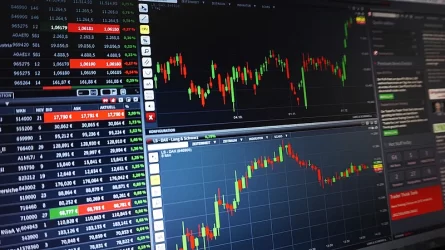While predicting stock price for tomorrow can be challenging, you can achieve more accuracy with data-based calculations
 Stock prices are dependent on multiple factors such as financial results, demand and supply, economic situation, industry trends, latest global and regional developments, etc. The trust and confidence associated with a specific stock also determines its price movement. For example, stock prices of large blue-chip companies may be easier to predict in comparison to that of mid-cap and small-cap stocks. Here are some methods you can try in terms of how to predict stock price for tomorrow.
Stock prices are dependent on multiple factors such as financial results, demand and supply, economic situation, industry trends, latest global and regional developments, etc. The trust and confidence associated with a specific stock also determines its price movement. For example, stock prices of large blue-chip companies may be easier to predict in comparison to that of mid-cap and small-cap stocks. Here are some methods you can try in terms of how to predict stock price for tomorrow.
Linear regression – In this method, past stock price trends are analyzed to predict the future stock price. Various factors impacting stock price are also usually included in linear regression. With linear regression, users can come up with a simple linear equation that predicts stock price for tomorrow.
Polynomial regression – This can be described as a more advanced version of linear regression method. In polynomial regression, the straight line seen in linear regression is replaced with a curve. This curve is based on the stock price data. With polynomial regression, it is possible to predict more complex stock price movements. Especially, in cases where stock prices show a non-linear pattern.
ARIMA (AutoRegressive Integrated Moving Average) – In addition to the past stock price movements, ARIMA models also include the moving averages related to a particular stock. This makes the calculations more accurate. ARIMA is most suited for making short-term predictions about stock price movement.
LSTM (Long Short-Term Memory) – A type of recurrent neural network (RNN), LSTM works well when it comes to identifying long-term dependencies present in time series data. LSTM can do short-term predictions about stock price movement. However, it works with more accuracy when making medium to long-term predictions about stock price movement.
Sentiment analysis – This involves a thorough study of various variables that may impact the prices of a particular stock. For that, an investor will have to go through news articles, read industry related news, examine competitor offerings and evaluate other factual data. To make the task easier, investors can use Natural Language Processing (NLP) that has the ability to identify sentiments based on data.
Technical analysis and indicators – There are various technical analysis indicators that an investor can use to predict stock price for tomorrow. Some useful methods include Moving Averages, Bollinger Bands and Relative Strength Index (RSI). These indicators can predict the right time to buy or sell a stock. Timely decisions are the key to book profits in the stock markets.
AI and Machine Learning tools – In the age of AI and machine learning (ML), various automated tools are available that can predict stock price for tomorrow. Some of the AI and ML based stock price movement prediction tools include Alpaca, QuantConnect, Kavout, TuringTrader, Numerai, AlphaSense, etc. Investors can get more accurate stock price predictions with these advanced AI-based tools.
As is evident, there are various tools and methods to predict stock price for tomorrow. However, no system can guarantee 100% accuracy. In essence, the final decision will depend on the predictions and your own gut instincts and experience. And of course, a lot will depend on how lucky you are on a given day.
 Newspatrolling.com News cum Content Syndication Portal Online
Newspatrolling.com News cum Content Syndication Portal Online






